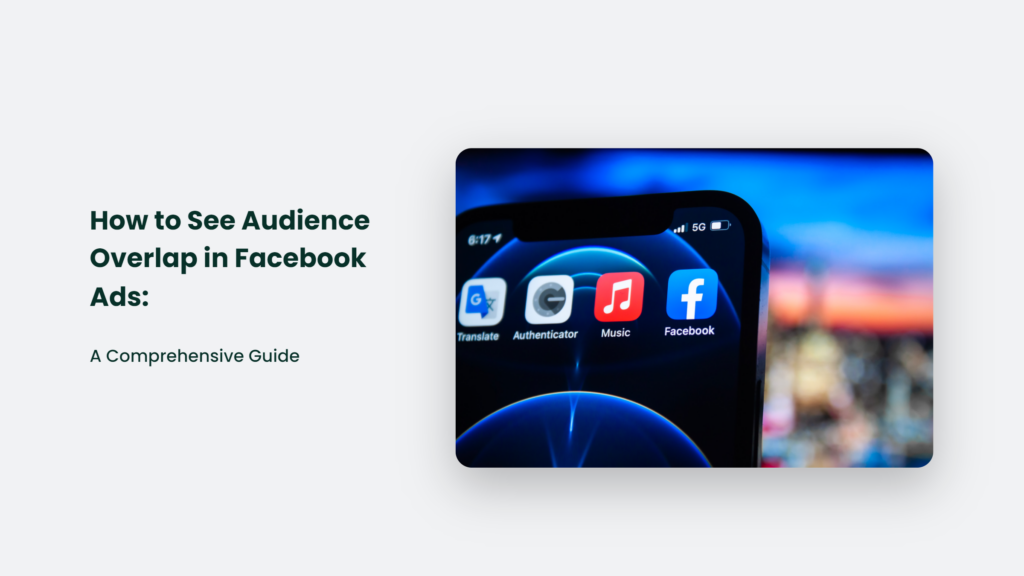

How to See Audience Overlap in Facebook Ads: A Comprehensive Guide

As Seen On
Picture this: You’ve created the perfect ad campaign for your target audience on Facebook. You’ve spent hours crafting the perfect ad copy, carefully selected the right visuals, and even optimized your ads for mobile. But then, you notice that your ads reach fewer people than you hoped. What’s the issue? Are your ads targeting the same audience as another ad campaign?
Welcome to the world of audience overlap in Facebook ads. In this comprehensive guide, we’ll explore audience overlap, why it matters, and, most importantly, how to see audience overlap in Facebook Ads and address it to optimize your ad campaigns. So, buckle up and get ready to dive deep into the world of audience overlap!

What is Audience Overlap in Facebook Ads?
Audience overlap occurs when two or more of your ad campaigns target the same group of people. It can lead to ad fatigue, where your audience sees the same ads repeatedly, causing them to lose interest or even develop a negative perception of your brand.
Why Audience Overlap Matters
You might be wondering why audience overlap is such a big deal. After all, if your audience likes your ads, why not show them more of the same? Here are a few reasons why audience overlap can be detrimental to your ad campaigns:
- Ad Fatigue: As mentioned earlier, ad fatigue occurs when your audience sees the same ads too many times, leading to a decrease in engagement and an increase in negative sentiment.
- Reduced Reach: If your ad campaigns target the same audience, you’re competing with yourself for ad space. It can result in higher impression costs and reduced ad reach.
- Inaccurate Attribution: Audience overlap can make determining which ad campaign is driving conversions difficult, leading to inaccurate attribution and potentially suboptimal optimization strategies.
How to See Audience Overlap in Facebook Ads
Now that we’ve established the importance of identifying audience overlap, let’s discuss how to find it in your Facebook ad campaigns:
- Use the Audience Overlap Tool: Facebook’s Audience Overlap Tool allows you to simultaneously compare the audience composition of up to five ad sets. To access this tool, go to your Ads Manager, click on the “Audiences” tab, and then select “Audience Overlap.”
- Analyze Audience Demographics: Take a close look at the demographics of your target audiences. If two campaigns target the same age group, location, or interests, there’s likely some audience overlap.
- Monitor Ad Performance Metrics: Monitor your ad performance metrics, such as reach, impressions, and conversions. If you notice a sudden drop in these metrics, it could be a sign of audience overlap.
How to Address Audience Overlap in Facebook Ads
Now that you’ve identified audience overlap in your ad campaigns, it’s time to address it and optimize your ads:
- Refine Your Targeting: The most straightforward solution to audience overlap is to refine your targeting criteria. It may involve adjusting the demographics, interests, or behaviours you’re targeting to ensure your ad campaigns reach distinct audiences.
- Test Different Ad Formats: Experimenting with different ad formats, such as image ads, video ads, or carousel ads, can help you reach a wider audience and reduce the likelihood of audience overlap.
- Optimize Your Ad Creative: Ensure your ad creative is engaging and relevant to your target audience. High-quality ads are more likely to be shown to users, reducing the need for audience overlap.
- Schedule Your Ads: Analyze your ad performance data to determine when your target audience is most active on Facebook. Scheduling your ads to run during these times can help you reach a wider audience and reduce audience overlap.
What is audience overlap in Facebook ads?
Audience overlap occurs when two or more of your ad campaigns target the same group of people, leading to ad fatigue and reduced reach.
How do I find audience overlap in my Facebook ads?
You can use Facebook’s Audience Overlap Tool, analyze audience demographics, and monitor ad performance metrics to identify audience overlap in your ad campaigns.
How do I address audience overlap in my Facebook ads?
To address audience overlap, refine your targeting, test different ad formats, optimize your ad creative, and schedule your ads.
The Bottom Line:
In conclusion, audience overlap is a crucial aspect of your ad campaigns that you must monitor and address. By identifying and optimizing your ads for audience overlap, you can ensure that your ads reach a wider audience and drive better results. So, go forth and conquer the world of audience overlap!
Konger
Up until working with Casey, we had only had poor to mediocre experiences outsourcing work to agencies. Casey & the team at CJ&CO are the exception to the rule.
Communication was beyond great, his understanding of our vision was phenomenal, and instead of needing babysitting like the other agencies we worked with, he was not only completely dependable but also gave us sound suggestions on how to get better results, at the risk of us not needing him for the initial job we requested (absolute gem).
This has truly been the first time we worked with someone outside of our business that quickly grasped our vision, and that I could completely forget about and would still deliver above expectations.
I honestly can't wait to work in many more projects together!
Disclaimer
*The information this blog provides is for general informational purposes only and is not intended as financial or professional advice. The information may not reflect current developments and may be changed or updated without notice. Any opinions expressed on this blog are the author’s own and do not necessarily reflect the views of the author’s employer or any other organization. You should not act or rely on any information contained in this blog without first seeking the advice of a professional. No representation or warranty, express or implied, is made as to the accuracy or completeness of the information contained in this blog. The author and affiliated parties assume no liability for any errors or omissions.

